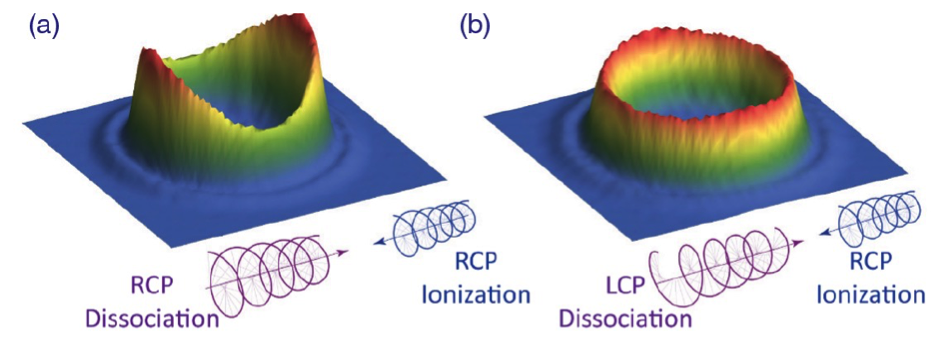It is well-known that cross sections of the nuclear fusion reactions D-T and D-3He increase by 50%, when the nuclear spins are polarized (e.g. both nuclei are “spin up”), compared to unpolarized spins. However, the lack of an experimental method to produce spin-polarized deuterium (SPD) in sufficient quantity, has left the three most important questions in polarized fusion unanswered:
-
Does the nuclear polarization survive the plasma long enough to benefit fusion? Experimental demonstration is, so far, lacking.
-
What is the polarization dependence of the D-D fusion reaction? Theoretical predictions are in disagreement, and range from enhancement to suppression.
-
Can sufficient SPD be produced for a nuclear reactor, about 1022 s-1?
In a recent publication from the group of Prof. Rakitzis in the journal Physical Review Letters, Sofikitis et al. demonstrate a new method to produce SPD, from the photodissociation of deuterium iodide (DI) with circularly polarized 270 nm light. This method of production requires a single photon, and occurs within 1.6 ns. These fast production times, about a million times faster than the conventional technique of Stern-Gerlach spin separation, allows production to occur at about a million times higher density, in the range of 1018 SPD/cm3. In turn, these high densities will likely allow the study of polarized laser fusion in the D-T, D-3He, and D-D fusion reactions, from the production of sufficient neutron products (approximately 106), produced by laser fusion using the 2 MJ/pulse laser at the National Ignition Facility in Livermore, California. Such studies can answers questions (1) and (2). Finally, industrial scale lasers can produce in excess of 1022 photons per second of 266 nm or 248 nm light, opening the possibility of producing sufficient SPD for a nuclear fusion reactor, such as that developed through the ITER project.

Article: “Highly Nuclear-Spin-Polarized Deuterium Atoms from the UV Photodissociation of Deuterium Iodide” by Dimitris Sofikitis, Pavle Glodic, Greta Koumarianou, Hongyan Jiang, Lykourgos Bougas, Peter C. Samartzis, Alexander Andreev, and T. Peter Rakitzis, Phys. Rev. Lett. 118, 233401 (2017).




